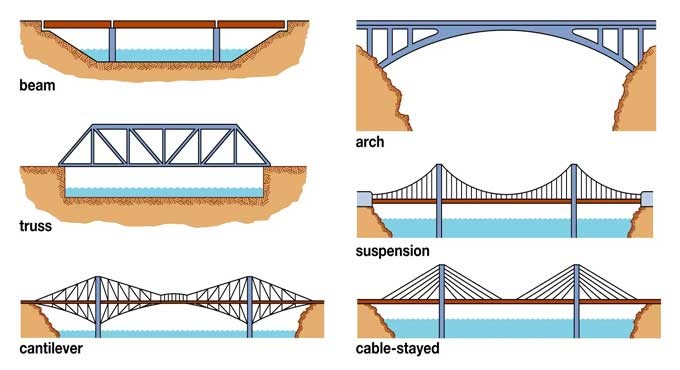
Beam Bridges: A Comprehensive Guide to Types, Works, and Pros & Cons
In the realm of civil engineering and infrastructure, bridges stand as remarkable symbols of human innovation and connectivity. Among the various types of bridges, the beam bridge holds a distinct place for its simplicity, versatility, and effectiveness.
In this detailed exploration, we will dive deep into the world of beam bridges, uncovering their types, how they work, advantages, disadvantages, and the essential properties that make them a cornerstone of bridge construction.
Understanding Beam Bridges
A beam bridge, also known as a girder bridge, is one of the simplest and oldest types of bridge. It consists of horizontal beams, often made of steel, concrete, or wood, supported by piers or abutments at both ends. These beams bear the load and distribute it to the supporting piers, allowing for the safe passage of vehicles, pedestrians, and even trains.
Types of Beam Bridges: A Variety of Designs
1. Simply Supported Beam Bridge: This is the most common type of beam bridge, featuring horizontal beams (girders) that rest on piers or abutments at both ends. The beams simply "sit" on the supports, distributing the load to the piers. This type is suitable for shorter spans and moderate loads.
2. Cantilever Beam Bridge: In this design, the beams extend beyond their supports, projecting from one or both sides of a pier. The central portion of the bridge is suspended between the cantilevers. This design allows for longer spans without the need for additional piers in the middle.
3. Continuous Beam Bridge: This type comprises multiple spans, with each span supported by piers. Unlike a simply supported beam bridge, the load is distributed across several beams and piers. This design is used for longer distances and offers greater flexibility in terms of load distribution.
4. Tied Arch Beam Bridge: While resembling a traditional beam bridge, this type incorporates an arch element. The arch and beams are connected, creating additional support and distributing the load more efficiently. Tied arch beam bridges are known for their aesthetic appeal and can be found in various settings.
5. Truss Beam Bridge: This type incorporates truss structures, which are frameworks composed of triangular elements. Truss beam bridges enhance the bridge's load-bearing capacity and are commonly used for longer spans.
6. Box Beam Bridge: In this design, the beam is hollow or box-shaped. The enclosed structure adds strength and stability, allowing the bridge to carry heavier loads over longer distances.
Working of Beam Bridges: Load Distribution and Support
The functioning of a beam bridge hinges on the principles of load distribution and support: